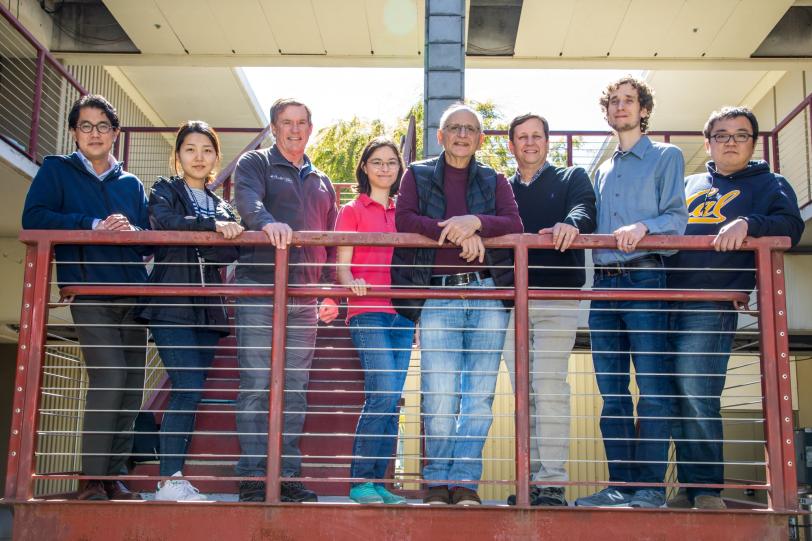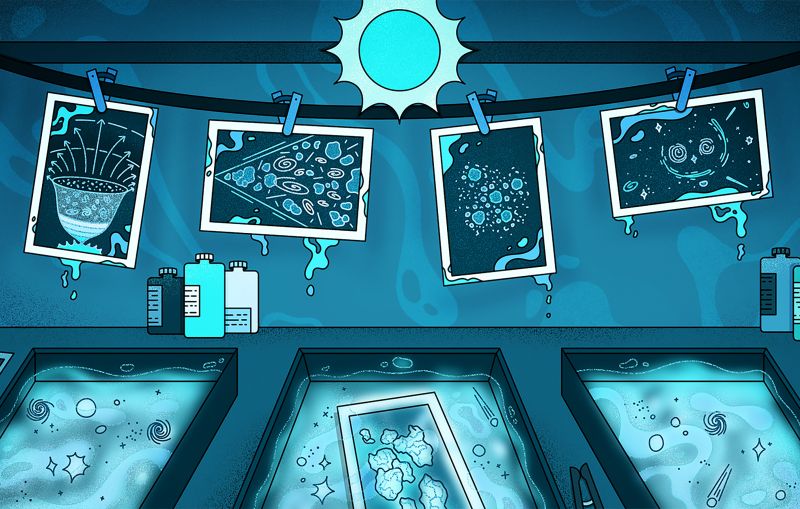Hirohisa Tanaka Joins SLAC to Push Limits of Neutrino Physics
The accomplished particle physicist will prepare the lab for its role in DUNE, a next-generation experiment designed to demystify neutrinos and their fundamental role in the universe.
By Manuel Gnida
Accomplished neutrino physicist Hirohisa Tanaka has joined the Department of Energy’s SLAC National Accelerator Laboratory as a professor of particle physics and astrophysics. He oversees a group at the lab that is preparing for research with the future Deep Underground Neutrino Experiment (DUNE) at the Long-Baseline Neutrino Facility (LBNF). The experiment will give scientists unprecedented opportunities to learn more about neutrinos – fundamental particles with mysterious properties that could play crucial roles in the evolution of the universe.
Neutrino scientists are searching for answers to three big questions. First, do neutrinos and antineutrinos behave differently? If they did, it could help explain why matter dominates antimatter in the cosmos. Second, which of the three known types of neutrinos is the heaviest, and which is the lightest? The order of their masses could influence how galaxies form in the universe. Third, are there additional undiscovered neutrino types and unknown forces associated with them? In the process of generating neutrinos at LBNF, exotic particles may be produced that could potentially be tied to dark matter, an invisible form of matter that is almost six times more prevalent in the universe than regular matter.
“One amazing thing about neutrinos is that we’ve been studying them for decades but still know relatively little about them,” Tanaka says. “It turns out that it’s crucial to study them in the right way, and we’re now building the right technology to do so.”

Tanaka is no stranger to SLAC. After completing his undergraduate studies in physics and mathematics at Harvard University, he came to SLAC in 1997 to work on a PhD in particle physics. He quickly became interested in neutrinos when an experiment at DOE’s Los Alamos National Laboratory found possible hints for the existence of a new neutrino, in addition to the three known types.
Intrigued by the results, which to this date have not been confirmed, Tanaka decided to continue his academic career in neutrino physics. After receiving his PhD from Stanford University in 2002, he began collaborating on the MiniBooNE and T2K neutrino experiments.
“I’ve always been drawn by unexplained phenomena that raise fundamental questions about the universe,” Tanaka says. “SLAC is a great environment to look for answers. Everyone at the lab excels at what they are doing, and I’m confident that together we can push the limits of neutrino physics.”
Demystifying Neutrinos with Sophisticated Experiments
Tanaka’s appointment is the latest move to expand SLAC’s profile in neutrino research – a scientific area that has become a major focus of U.S. particle physics in recent years.
His team is preparing for research at LBNF, which will begin in the mid-2020s to send neutrinos and antineutrinos 800 miles through the Earth – from Fermilab in Illinois to the future DUNE detector at the Sanford Underground Research Facility in South Dakota. The primary goal is to study in great detail how neutrinos change from one type into another along the way, which is called neutrino oscillation, and compare the results to those for antineutrinos.

Tanaka is also continuing his involvement in the T2K experiment, which is currently studying neutrino oscillation in Japan over a much shorter distance of 180 miles.
“If we’re lucky, we’ll be able to see the first hints of differences in the behavior of neutrinos and antineutrinos with T2K,” Tanaka says. “DUNE, on the other hand, will give us definite answers due to its longer baseline and more powerful neutrino beams.”
In addition, Tanaka and his SLAC colleagues participate in Fermilab’s short-baseline neutrino program, which will study neutrino oscillation over even shorter distances – hundreds of yards instead of hundreds of miles. It will search for a hypothetical fourth neutrino using three detectors: the Short-Baseline Near Detector, which is currently under construction close to the neutrino source; the MicroBooNE detector, which is already taking data at an intermediate distance; and the ICARUS detector, which is being installed at the far end.

Building a Strong Neutrino Team
So far, the SLAC group has been focusing on developing the data processing system for future neutrino experiments. It consists of electronics that turn the raw signal from a detector into a digital one; data acquisition systems to record this data; and software to determine if a signal was caused by a neutrino and to compute the neutrino’s properties, such as type and energy.
The researchers are exploring the possibility of analyzing events recorded by the detector with machine learning techniques inspired by advanced pattern recognition methods developed for computer vision. They also plan on contributing to the design of the near detector – a key component of the DUNE experiment that will study neutrinos near their source, allowing the separation of neutrino oscillation from other possible effects.
DUNE will also be able to capture neutrino signals from the sky that were produced in powerful cosmic events, such as exploding stars, called supernovas. Unlike the neutrino streams from Fermilab, which will arrive at DUNE at precise intervals, astrophysical signals can happen at any time, making them challenging to study.
“We don’t know when certain astrophysical events will happen, so we need to be always ready for them,” Tanaka says. “But we can’t possibly record everything DUNE will see because the data volume would simply be overwhelming. That’s why we’re developing new techniques that’ll make sure we don’t miss those important sporadic events.”

For questions or comments, contact the SLAC Office of Communications at communications@slac.stanford.edu.
SLAC is a multi-program laboratory exploring frontier questions in photon science, astrophysics, particle physics and accelerator research. Located in Menlo Park, Calif., SLAC is operated by Stanford University for the U.S. Department of Energy's Office of Science.
SLAC National Accelerator Laboratory is supported by the Office of Science of the U.S. Department of Energy. The Office of Science is the single largest supporter of basic research in the physical sciences in the United States, and is working to address some of the most pressing challenges of our time. For more information, please visit science.energy.gov.





